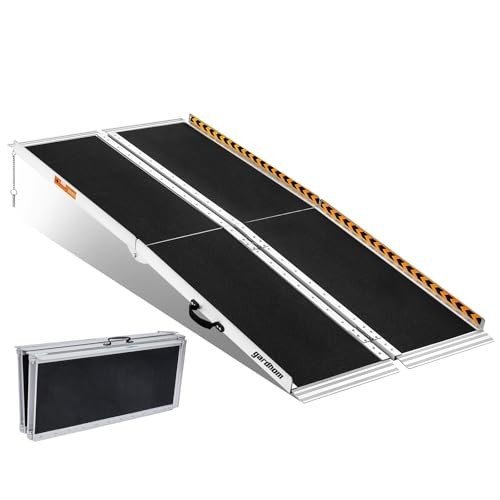
Wheelchair Ramps
Add a review FollowOverview
-
Founded Date May 15, 1901
-
Sectors Security
-
Viewed 15
Company Description
Guide To Home Wheelchair Ramps: The Intermediate Guide For Home Wheelchair Ramps
Understanding Home Wheelchair Ramps: A Comprehensive Guide
Accessibility in our homes is important for making sure that everyone, no matter their physical capability, can take pleasure in the area comfortably and separately. Wheelchair ramps have become a crucial service for people with mobility obstacles, supplying an important means of accessing their homes and browsing different surfaces. This blog post will dive into the kinds of home wheelchair ramps, setup considerations, choosing the right ramp, and frequently asked concerns surrounding these crucial pieces of equipment.
Types of Home Wheelchair Ramps
Home wheelchair ramps come in a variety of designs and styles to accommodate various requirements and living scenarios. Below is a table summing up the most typical kinds of wheelchair ramps readily available for residential usage:
| Type of Ramp | Description | Pros | Cons |
|---|---|---|---|
| Portable Ramps | Lightweight and easy to transport; suitable for temporary use. | Economical; easy to shop and move. | May require manual setup and takedown. |
| Limit Ramps | Developed to bridge little height differences at doorways. | Basic setup; can typically be utilized inside. | Limited height; not appropriate for steep inclines. |
| Solid Surface Ramps | Developed from products like wood or aluminum, these ramps offer robust support and stability. | Durable; appropriate for a range of outside conditions. | Can need professional installation; long-term. |
| Modular Ramps | Adjustable ramps that can be reconfigured based upon changing needs. | Versatile design; appropriate for various heights. | Higher preliminary investment; permanence. |
| Folding Ramps | Can be folded for easy transport and storage; typically made of lightweight materials. | Flexible and portable; simple to establish. | Minimal weight capability compared to solid ramps. |
Selecting the Right Ramp
Choosing the appropriate wheelchair ramp for a home needs mindful consideration of different factors. Here is a list of aspects to keep in mind:
Height and Incline:
- Measure the height difference in between the ground and the entryway indicate make sure the chosen ramp is long enough to create a safe slope, usually a ratio of 1:12 (1 inch in increase = 12 inches in length).
Weight Capacity:
- Consider the weight capacity of the ramp. Most ramps support in between 300 to 800 pounds, but it’s important to check specific standards, specifically for much heavier mobility devices.
Usage:
- Determine if the ramp will be utilized mostly inside your home or outdoors, as this will impact the material and style choice.
Material:
- Ramps can be made from several materials, consisting of aluminum, wood, and fiberglass. Each features its own set of pros and cons relating to resilience, weight, and maintenance.
Installation:
- Assess whether you can install the ramp yourself or if professional help is required. Some ramps might require more complicated construction skills.
Regional Regulations:

- Be mindful of any local building regulations and regulations concerning installation, particularly for permanent structures.
Installation Considerations
When planning to set up a wheelchair ramp in your home, one must take particular factors to consider into account. These consist of:
Space: Ensure there is sufficient space to accommodate the ramp without obstructing other locations.
Foundation: A strong and level structure assists keep stability and safety.
Safety Features: Look for ramps geared up with features such as non-slip surfaces, handrails, and side barriers.
Often Asked Questions (FAQ)
Q1: How do I determine the slope of a wheelchair ramp?A: The advised slope for wheelchair ramps is 1:12, implying for every inch of vertical increase, there need to be at least 12 inches of ramp run to keep the incline workable and safe.
Q2: Are there monetary assistance programs for wheelchair ramps?A: Yes, different governmental and non-profit organizations use grants and monetary assistance for home adjustments, including wheelchair ramps. Contact local disability services or foundations for information.
Q3: Can I construct a wheelchair ramp myself?A: Yes, depending on your abilities, you can develop a ramp. However, you should follow local building regulations and safety requirements. For more intricate styles, hiring an expert is advisable.
Q4: What maintenance do wheelchair ramps require?A: Regular examination for wear and tear, checking for slippery surface areas, and making sure that handrails stay safe and secure are essential upkeep tasks. Tidy the ramp occasionally to remove dirt and particles.
Q5: What are the common materials used for outside wheelchair ramps?A: Common products for outside ramps consist of aluminum, which is lightweight and rust-resistant, and dealt with wood, which is resilient but might need more maintenance.
Home wheelchair ramps play a pivotal role in improving ease of access for people with mobility difficulties. By understanding the various types, installation considerations, and frequently asked questions, homeowners can make informed choices that will substantially enhance their liked ones’ independence and quality of life. Guaranteeing that homes stay available not just breaks down physical barriers but also cultivates an inclusive environment for everyone.

